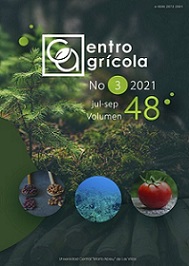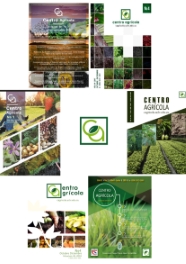CE: 1763 CF: cag09418
SCIENTIFIC ARTICLE
Substrates evaluation for the production of earthworm (Eisenia foetida)
Evaluación de sustratos para la producción de lombriz de tierra (Eisenia foetida)
Carlos Osvaldo Romero Romano1*, Juventino Ocampo Mendoza1, Engelberto Sandoval Castro1, José Refugio Tobar Reyes2
1Colegio de Postgraduados, Campus Puebla. Carretera Federal México-Puebla Km. 125.5, Santiago Momoxpan, Puebla, México, CP 72760
2Benemérita Universidad Autónoma de Puebla, Facultad de Ingeniería Agrohidráulica. Domicilio conocido, San Juan Acateno, Teziutlán, Puebla
*E-mail: This email address is being protected from spambots. You need JavaScript enabled to view it.; This email address is being protected from spambots. You need JavaScript enabled to view it.; This email address is being protected from spambots. You need JavaScript enabled to view it.; This email address is being protected from spambots. You need JavaScript enabled to view it.
ABSTRACT
The objective of this research was to evaluate the droppings of bovine and ovine and the peanut shell (Arachis hypogaea L.) as a substrate to produce Eisenia foetida Sav. earthworm. The experimental design was randomized blocks with three replicates and seven treatments: peanut shell, bovine droppings, ovine droppings, and combinations of them. The variables analyzed were population of young worms (without clitellum), adults (with clitellum) and total population. The substrates were deposited in 0.72 m3 wooden crates and pre-composted. When the temperature of the substrates was in the range of 23-25 ° C and the humidity between 75-80 %, 50 earthworms were inoculated per box. Sixteen counts were made (one per week), using a PVC tube (40 cm long and 10.16 cm diameter). In each count eight samples of substrate were taken for each of the treatments and their repetitions, following a zigzag pattern. Significant differences (Tukey, p< 0.05 %) were obtained by treatment in the three variables. The mixture "peanut shell-sheep droppings-bovine droppings" recorded the highest number of young worms (113.29). The combination "peanut peel -bovine droppings", as well as "bovine droppings alone", showed the largest population of adult earthworms (98.94 and 94.89). The total population was greater in the treatments "peanut peel-bovine droppings" and "peanut peel-sheep droppings-bovine droppings" (196.50 and 197.33). It was concluded that the combination of bovine droppings with peanut shell is a suitable substrate for earthworm production.






